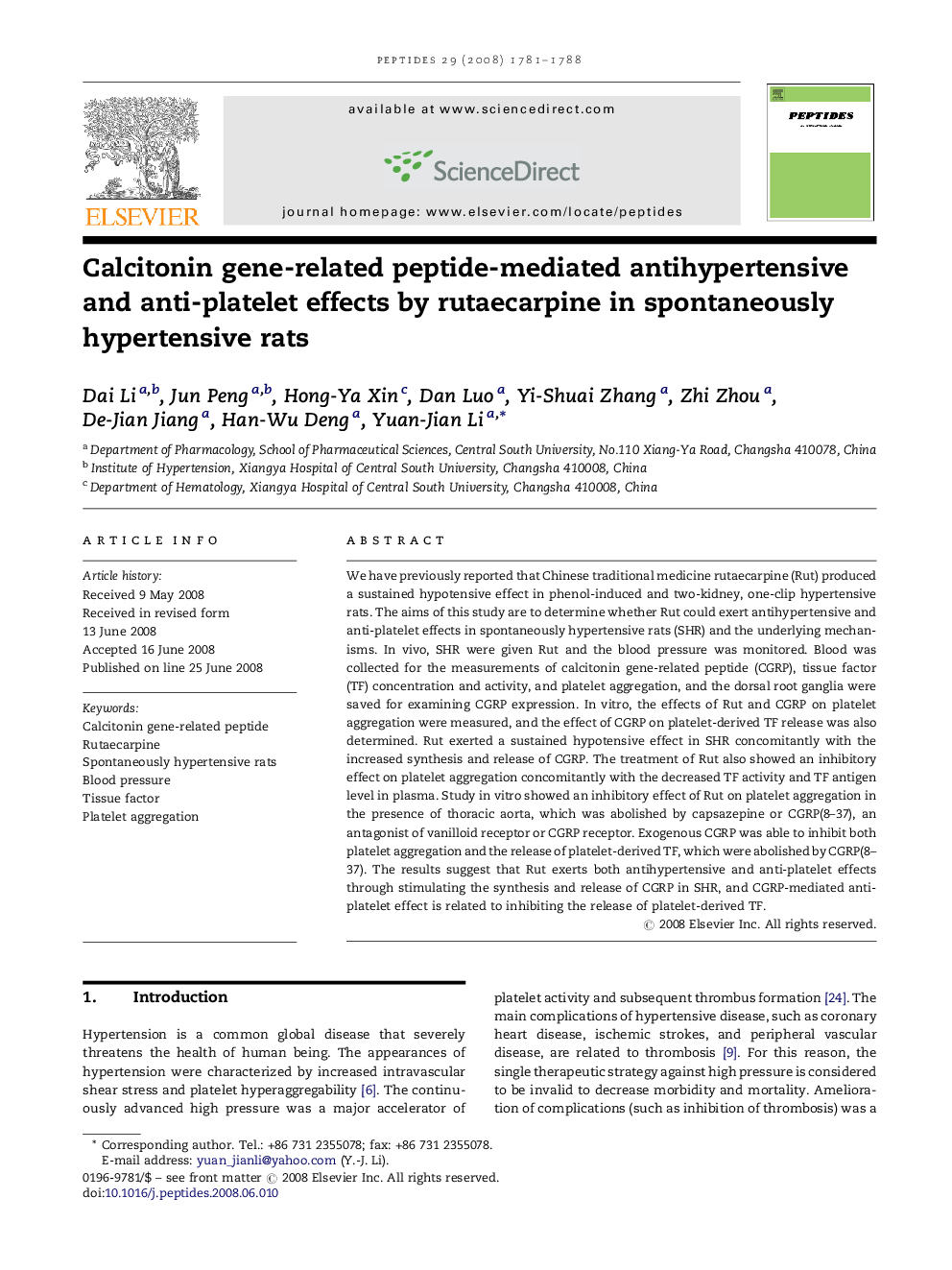| Article ID | Journal | Published Year | Pages | File Type |
|---|---|---|---|---|
| 2007370 | Peptides | 2008 | 8 Pages |
We have previously reported that Chinese traditional medicine rutaecarpine (Rut) produced a sustained hypotensive effect in phenol-induced and two-kidney, one-clip hypertensive rats. The aims of this study are to determine whether Rut could exert antihypertensive and anti-platelet effects in spontaneously hypertensive rats (SHR) and the underlying mechanisms. In vivo, SHR were given Rut and the blood pressure was monitored. Blood was collected for the measurements of calcitonin gene-related peptide (CGRP), tissue factor (TF) concentration and activity, and platelet aggregation, and the dorsal root ganglia were saved for examining CGRP expression. In vitro, the effects of Rut and CGRP on platelet aggregation were measured, and the effect of CGRP on platelet-derived TF release was also determined. Rut exerted a sustained hypotensive effect in SHR concomitantly with the increased synthesis and release of CGRP. The treatment of Rut also showed an inhibitory effect on platelet aggregation concomitantly with the decreased TF activity and TF antigen level in plasma. Study in vitro showed an inhibitory effect of Rut on platelet aggregation in the presence of thoracic aorta, which was abolished by capsazepine or CGRP(8–37), an antagonist of vanilloid receptor or CGRP receptor. Exogenous CGRP was able to inhibit both platelet aggregation and the release of platelet-derived TF, which were abolished by CGRP(8–37). The results suggest that Rut exerts both antihypertensive and anti-platelet effects through stimulating the synthesis and release of CGRP in SHR, and CGRP-mediated anti-platelet effect is related to inhibiting the release of platelet-derived TF.
